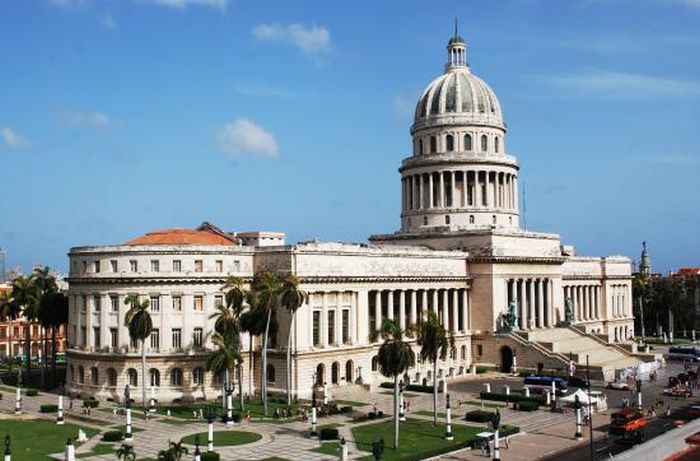
The Cuban capital, which granted the title of Wonder City of the World in 2016, features extraordinary architectural and urban values
Havana today celebrates 498 years of existence in the midst of a particular revelry that not only adds to its habitual inhabitants, but also to travelers from all over the world.
Since dawn, the people —more like tradition than superstition— ask for wishes for their futures, especially those who visit the vicinity of the ceiba tree, where there was a similar one, of ancient generations, the founder.
Declared among the seven Wonder Cities of the World, Havana justifies that and many other recognitions not only for its beauty and mobility, but also for the traditions of its people.
The well-preserved urban landscape, thanks to the Office of the Historian of the City (Eusebio Leal) and to the serious intentions of the Ministry of Tourism (Mintur) and other citizens, today seems a Babel in terms of languages, understandings and people.
Founded definitively in 1519 in the shade of a leafy tree, a Ceiba, Havana, capital of Cuba, suddenly became a cosmopolitan city full of travelers from all over the world eager to know it in depth.
A delightful atmosphere is breathed in its streets where people arrive from any of the five continents, speaking their language, but interpenetrating with the capitalists in the only possible way: through cordiality.
Here you can see the main benefits of tourism, such as unification and common understandings of different cultures and peoples.
Cuba, and Havana as essence of essence, represents a very mixed people, where the main origins are the Spanish and the African, but also Chinese, Haitian, German, French, Hebrew and many other parts come together.
The Villa de San Cristóbal de La Habana, as it really is its name, was founded on November 16, 1519 on the shores of Puerto Carenas, after it had an initial settlement on the south coast of the country in 1515.
Experts define this first city in the western insular area as a place of greatness due to its monuments and a related human scale through its unique heritage values where five centuries of history are based.
The bay was the meeting point of the entire Spanish fleet on its journey to the metropolis carrying the wealth of the entire Western Hemisphere, guarded these fleets by warships, under the constant siege of corsairs, pirates and ships of rival powers.
Seen its particular attraction of city invaded in 1555 by pirates and in 1792 by the English fleet, its walls and shelters, they keep pieces, stones and traces of great value for travelers.
All its wealth was awarded by the United Nations Organization for Education, Science and Culture (UNESCO) by declaring it a World Heritage Site in 1982.
It is the capital of the Republic, fully covers 732 square kilometers and has 15 municipalities of which nine are fully urban, of which 4.5 square kilometers belong to the old part, the most interesting (with 2.2 km on the historical-recreational axis).
 Escambray ENGLISH EDITION
Escambray ENGLISH EDITION





Escambray reserves the right to publish comments.